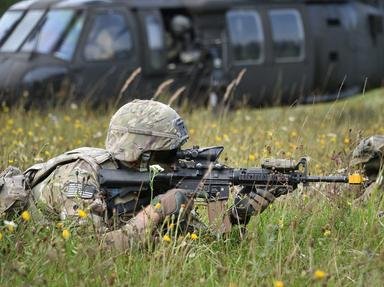Quiz Answer Key and Fun Facts
1. Which pre-war German tank model was the only design that remained in production, as well as front-line service, throughout World War II?
2. Known as the Tiger or Panzer VI, this German heavy tank was designed after encounters with heavier Soviet tanks. Where did the Tiger first see combat?
3. Which German light tank model was armed with machine guns only?
4. Which of these German tank models was taken from Czechoslovakia when that country was occupied by Nazi Germany?
5. Considered to be one of the best tank designs of the war, which German tank was designed in response to the Soviet T-34 tank?
6. Armed with a 20mm gun, this was another pre-war German tank design that played a large role in the early days of WW2. What was this vehicle's designation?
7. Attempting to stem the overwhelming tide of Allied tank forces, the Germans designed super-heavy tanks such as the 200 ton "Maus", which was armed with a 128mm gun. How many of these units were completed before the end of the war?
8. Another light tank built for the Czech army but appropriated by Germany was the Panzer 38(t), which remained in production until 1942. How many of these units were built for the German Army?
9. What was the name of the last heavy tank model produced by Germany during World War II?
10. Which German tank, designed in the 1930s, was originally intended as the main tank vs. tank weapon of the German Army?
Source: Author
Reamar42
This quiz was reviewed by FunTrivia editor
stedman before going online.
Any errors found in FunTrivia content are routinely corrected through our feedback system.
